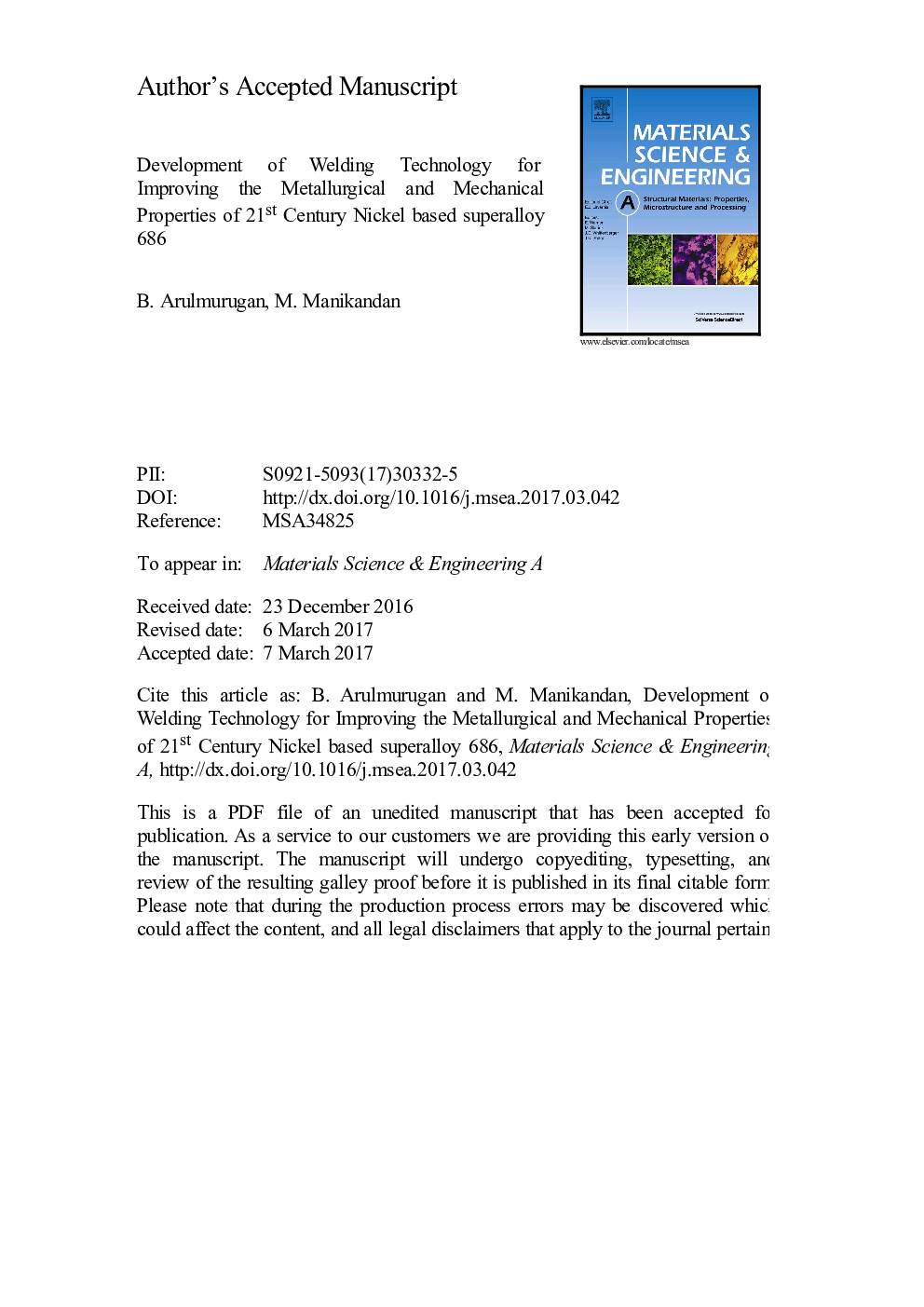| کد مقاله | کد نشریه | سال انتشار | مقاله انگلیسی | نسخه تمام متن |
|---|---|---|---|---|
| 5455909 | 1514652 | 2017 | 40 صفحه PDF | دانلود رایگان |
عنوان انگلیسی مقاله ISI
Development of welding technology for improving the metallurgical and mechanical properties of 21st century nickel based superalloy 686
ترجمه فارسی عنوان
توسعه تکنولوژی جوشکاری برای بهبود خواص متالورژی و مکانیکی ابررسانای مبتنی بر نیکل 216 قرن
دانلود مقاله + سفارش ترجمه
دانلود مقاله ISI انگلیسی
رایگان برای ایرانیان
کلمات کلیدی
موضوعات مرتبط
مهندسی و علوم پایه
مهندسی مواد
دانش مواد (عمومی)
چکیده انگلیسی
Alloy 686 is a highly corrosion resistant 21st-Century Nickel based superalloy derived from Ni-Cr-Mo ternary system. The alloying elements chromium (Cr) and molybdenum (Mo) are added to improve the resistance to corrosion in the broad range of service environment. The presence of a higher percentage of alloying elements Cr and Mo lead to microsegregation and end up with hot cracking in the fusion zone of Nickel-based superalloys. However, there is scanty of information regarding the welding of alloy 686 with respect to the microsegregation of alloying elements. The present study investigates the possibility of bringing down the microsegregation to cut down the formation of secondary phases in the fusion zone. The weld joints were fabricated by Gas Tungsten Arc Welding (GTAW) and Pulsed current gas tungsten arc welding (PCGTAW) with ERNiCrMo-10 filler and without filler wire (autogenous) mode. The microstructural properties of the weld joints were studied with optical and Scanning Electron Microscope (SEM). The joints fabricated by pulsed current (PC) technique shows refined microstructure, narrower weld bead and practically no heat affected zone (HAZ). Scanning Electron Microscope demonstrates the presence of secondary phases in the interdendritic regions of GTAW case. Energy Dispersive X-ray Spectroscopy (EDS) analysis was carried out to evaluate the microsegregation of alloying element. The results show that the segregation of Mo noticed in the interdendritic zone of GTAW both autogenous and filler wire. Tensile and Impact tests were done to evaluate the strength, ductility, and toughness of the weld joints. The results show that the PCGTA helps to obtain improved strength, ductility and toughness of the weld joints compared to their respective GTAW. Bend test did not lead to cracking irrespective of the type of welding adopted in the present study.
ناشر
Database: Elsevier - ScienceDirect (ساینس دایرکت)
Journal: Materials Science and Engineering: A - Volume 691, 13 April 2017, Pages 126-140
Journal: Materials Science and Engineering: A - Volume 691, 13 April 2017, Pages 126-140
نویسندگان
B. Arulmurugan, M. Manikandan,
